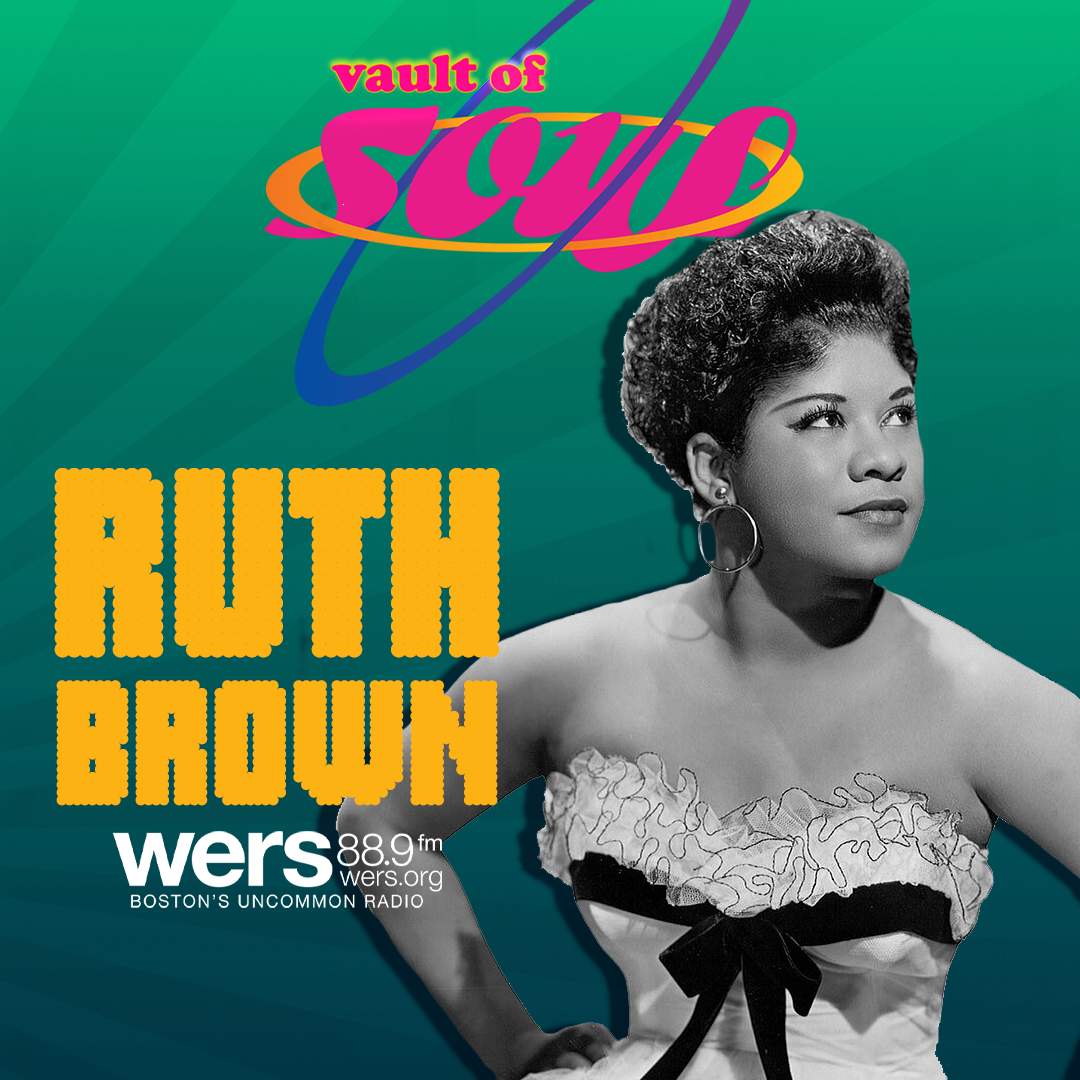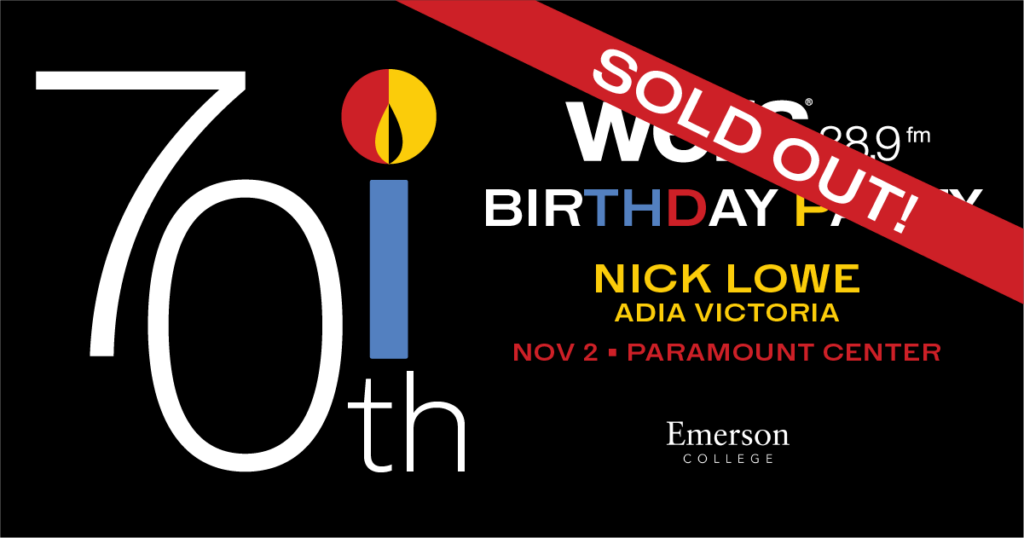
By Rebecca Kasuba, Staff Writer
Each week of Black History Month, we open the 88.9 Vault of Soul with profiles of iconic soul pioneers. To learn more, check out the magnificent artist and actress Ruth Brown's biography, best tracks, and awards below!
Biography
Ruth Brown was born in Portsmouth, Virginia and was the eldest of seven siblings. She got her love of singing from participating in a local church choir directed by her father at Emmanuel African Methodist Episcopal church. As Brown grew up she started to show more interest in singing by performing at USO shows and night clubs, this was a way to rebel against her father as well. By age 17, Brown decided to run away from home to become a performer along with Jimmy Brown, whom she soon married.
Runaway Girl: Early Career
This runaway girl started her career by performing at local bars and clubs. She even spent a month with Lucky Millinder’s orchestra. Then, Brown gained a gig and connections from Blanche Calloway, who would become her future manager, at a nightclub in Washington, D.C. After that Brown was recommended to Atlantic Records from Willis Conover after he watched her perform with Duke Ellington. Unfortunately, Brown was a part of a horrific car crash and couldn’t make it to the audition. Instead, she signed her contract with Atlantic Records in her hospital bed.
At first, Brown only performed popular ballad songs but Atlantic Records convinced her to switch to more of a rhythm and blues vibe. She took the criticism with open arms and adopted the Ruth Brown sound we know today.
Brown was also immensely popular among the southern states and played at many racially segregated dances. She claimed one writer quoted that “In the south, Ruth Brown is better known than Coca-Cola.”
A Run of Hits
Ruth Brown’s first hit came in 1949 with the song “So Long,” which she performed for her first audition. In 1950, it was followed by “Teardrops from My Eyes” written by Rudy Toombs and became her first major upbeat hit, establishing her as an important figure in the industry. This song was number one on Billboard’s R&B for 11 weeks straight and even earned Brown the nickname of ‘Miss Rhythm’.
She wasn’t done though. Brown continued with hits like “I’ll Wait For You” (1951), “I Know” (1951), “5-10-15 Hours” (1953), “(Mama) He Treats Your Daughter Mean” (1953), “Oh What a Dream” (1954), “Mambo Baby” (1954), and “Don’t Deceive Me” (1960). Throughout the release of all this music (1949-1955) Brown’s records stayed on the R&B charts for a total of 149 weeks. She continued to rack up 21 Top 10 hits throughout the years, including five that landed at number one. Brown had completely dominated the R&B scene; she was named number one on The Billboard 1954 Disk Jockey Poll for Favorite R&B Artists.
During the 60s Brown made the decision to fade from public view to focus on being a mother to her children.
Queen of R&B and Broadway: Later Career
In 1975, Brown decided to return to her music career and even broaden her horizons as a creative. When she first returned, Brown started her acting career with a series of comedic acting jobs. This was the start of her iconic film, television, and stage career. Brown continued with a recurring role during the second season of Hello, Larry where she played Leona Wilson, a neighbor.
One of Ruth Brown's most iconic roles was starring as Motormouth Maybelle Stubbs in the popular John Waters film Hairspray which has now become a popular musical in the modern day. Brown was also a Broadway icon in her day by starring in productions like Amen Corner and Black and Blue. Frank Rich, The New York Times theater critic, wrote, “Ruth Brown, the rhythm-and-blues chanteuse, applies sarcastic varnish and two-a-day burlesque timing to the ribald Andy Razaf lyrics of ‘If I Can’t Sell It, I’ll Keep Sittin’ on It.’”
Brown continued to record music and even paired off with Charles Brown, a rhythm-and-blues singer; she also toured with Bonnie Raitt in the late 1990s. In addition, she hosted the radio program Blues Stage for six years beginning in 1989. Brown even continued her acting career in 2000 by playing a singer Tressa Thoman in Little Richard.
Until the end of her life Brown continued to explore every creative opportunity she could. For example, at the age of 78 Brown was still touring. She had also completed the pre-production work of the Danny Glover film, Honeydripper, unfortunately, she did not live long enough to finish the film’s production.
Who Influenced Ruth Brown:
- Sarah Vaughan
- Billie Holiday
- Dinah Washinton
Who Ruth Brown influenced:
- Etta James
- Aretha Franklin
- Tina Turner
Awards and Honors:
- Grammy Award, Best Female Jazz Vocal Performance, Blues on Broadway (1989)
- Tony Award, Best Actress in a Musical, Black and Blue (1989)
- Rhythm & Blues Foundation Pioneer Award (1989)
- Inducted into the Oklahoma Jazz Hall of Fame (1992)
- Inducted into the Rock & Roll Hall of Fame (1993)
- Ralph Gleason Award for Music Journalism (1996)
- Inducted into the Virginia Musical Museum’s Virginia Music Hall of Fame (2013)
- Grammy Lifetime Achievement Award (2016)
- Inducted into National Rhythm & Blues Hall of Fame (2017)
Spotlight tracks
So Long (1949)
This song was Brown’s audition piece and her very first hit with Atlantic Records, and you can hear why. Brown’s vocal performance is spectacular as her emotional soulful voice takes us on a powerful journey about saying goodbye. Her compelling vibrato and broadway like vocals demands our attention as we listen. The song is a sad song on paper but Brown’s delivery makes us feel her hope to see her lover again, as well. This song truly captures that ‘old-timey’ sound but has remained timeless, thanks to Ruth Brown.
Mama He Treats Your Daughter Mean (1952)
Now this song seems more modern to me because of Brown’s squeak-like vocals that seem to remind me of Madonna (especially from Madonna’s Material Girl). But here it has less of a pop-like feel and, to me, it feels more soulful. Still, this song resonates with me on a deeper level because of the song's message. It actively calls out men for their terrible sexist behavior and, let me remind you, this song was produced in the 50s. So, it feels way ahead of its time and Brown adds to this with her vocal performance for the melody. It’s also empowering for not only white women but, especially, for black women, as they have personification and power, through Brown, as they stand up to this oppression.
I Don’t Know (1959)
One of Brown’s slower songs but it feels more sensual in its nature. Her vocal performance here feels exactly like butter, in a jazzy R&B kind of way. The lyrics give us Brown’s monologue as she contemplates going back to a lover who mistreated her in some way. It seems as if she is reminiscing on the ‘good ol’ days’ of her relationship, painting a sensual and lustful kind of vocal performance. Her strong tone of jazz shines through in this song as we get a different vibe with this song when compared to the others.


